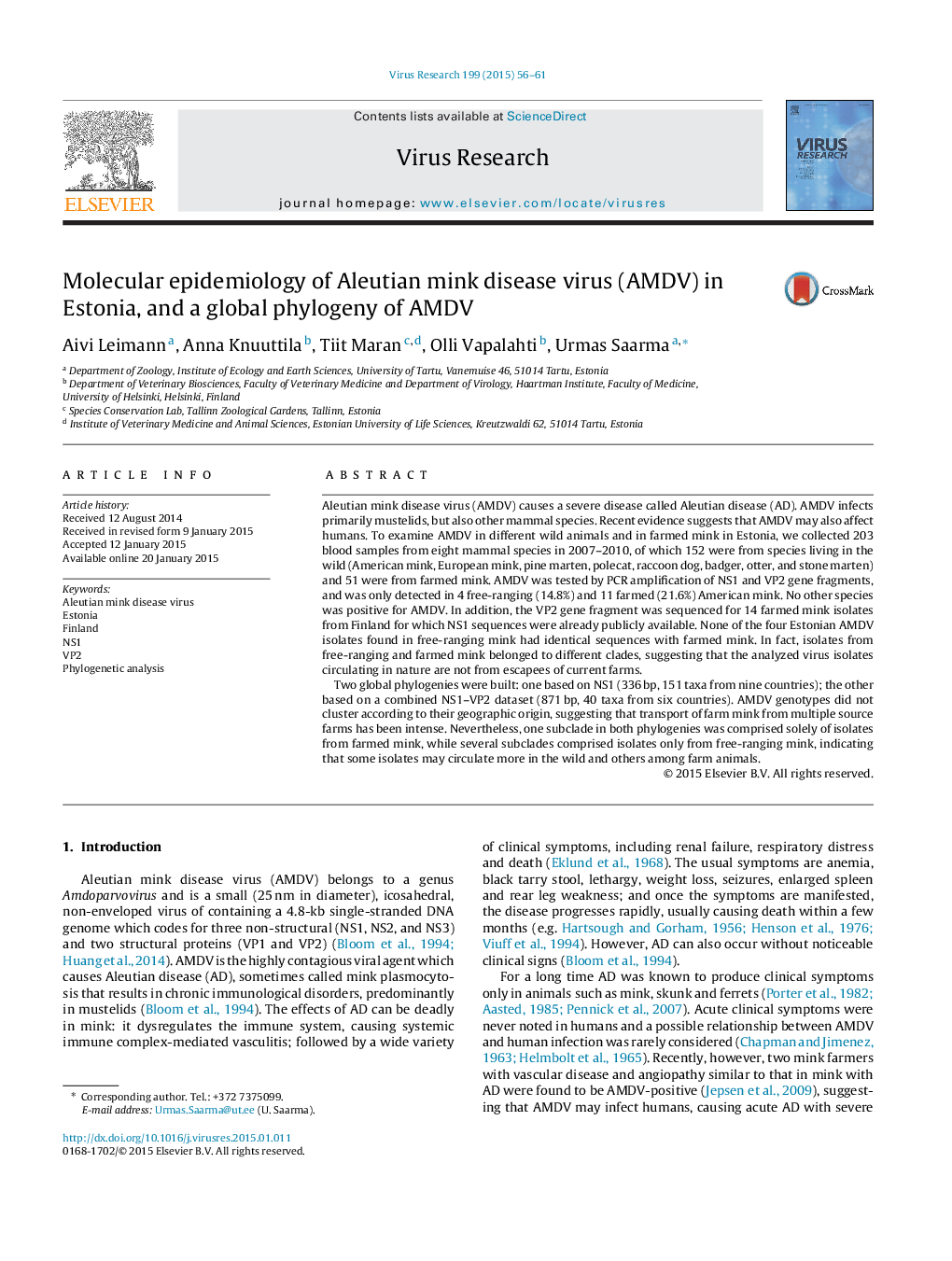| Article ID | Journal | Published Year | Pages | File Type |
|---|---|---|---|---|
| 6142252 | Virus Research | 2015 | 6 Pages |
â¢Aleutian mink disease virus (AMDV) was analyzed in eight mammal species in Estonia and was identified in feral and farmed American mink, but not in other species.â¢This is first evidence of AMDV in Estonia.â¢The analyzed virus isolates in feral mink in Estonia did not cluster with the virus isolates from farmed mink.â¢Global AMDV phylogenies were built based on NS1 and VP2 sequences: AMDV genotypes did not cluster according to their geographic origin.â¢Some AMDV isolates may circulate more in the wild and the others more among farm animals.
Aleutian mink disease virus (AMDV) causes a severe disease called Aleutian disease (AD). AMDV infects primarily mustelids, but also other mammal species. Recent evidence suggests that AMDV may also affect humans. To examine AMDV in different wild animals and in farmed mink in Estonia, we collected 203 blood samples from eight mammal species in 2007-2010, of which 152 were from species living in the wild (American mink, European mink, pine marten, polecat, raccoon dog, badger, otter, and stone marten) and 51 were from farmed mink. AMDV was tested by PCR amplification of NS1 and VP2 gene fragments, and was only detected in 4 free-ranging (14.8%) and 11 farmed (21.6%) American mink. No other species was positive for AMDV. In addition, the VP2 gene fragment was sequenced for 14 farmed mink isolates from Finland for which NS1 sequences were already publicly available. None of the four Estonian AMDV isolates found in free-ranging mink had identical sequences with farmed mink. In fact, isolates from free-ranging and farmed mink belonged to different clades, suggesting that the analyzed virus isolates circulating in nature are not from escapees of current farms.Two global phylogenies were built: one based on NS1 (336Â bp, 151 taxa from nine countries); the other based on a combined NS1-VP2 dataset (871Â bp, 40 taxa from six countries). AMDV genotypes did not cluster according to their geographic origin, suggesting that transport of farm mink from multiple source farms has been intense. Nevertheless, one subclade in both phylogenies was comprised solely of isolates from farmed mink, while several subclades comprised isolates only from free-ranging mink, indicating that some isolates may circulate more in the wild and others among farm animals.
